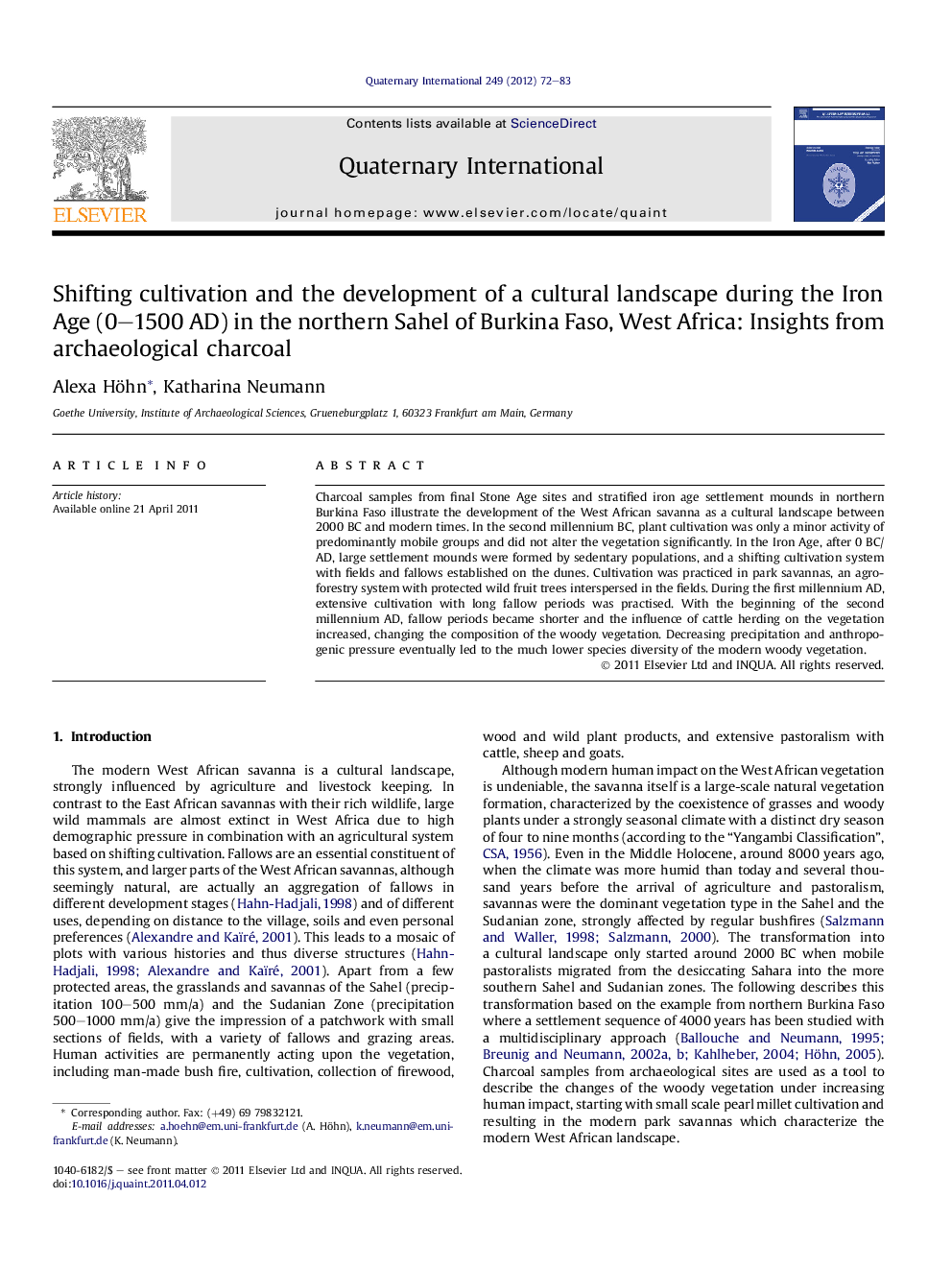| کد مقاله | کد نشریه | سال انتشار | مقاله انگلیسی | نسخه تمام متن |
|---|---|---|---|---|
| 7453082 | 1484236 | 2012 | 12 صفحه PDF | دانلود رایگان |
عنوان انگلیسی مقاله ISI
Shifting cultivation and the development of a cultural landscape during the Iron Age (0-1500 AD) in the northern Sahel of Burkina Faso, West Africa: Insights from archaeological charcoal
دانلود مقاله + سفارش ترجمه
دانلود مقاله ISI انگلیسی
رایگان برای ایرانیان
موضوعات مرتبط
مهندسی و علوم پایه
علوم زمین و سیارات
زمین شناسی
پیش نمایش صفحه اول مقاله

چکیده انگلیسی
Charcoal samples from final Stone Age sites and stratified iron age settlement mounds in northern Burkina Faso illustrate the development of the West African savanna as a cultural landscape between 2000 BC and modern times. In the second millennium BC, plant cultivation was only a minor activity of predominantly mobile groups and did not alter the vegetation significantly. In the Iron Age, after 0 BC/AD, large settlement mounds were formed by sedentary populations, and a shifting cultivation system with fields and fallows established on the dunes. Cultivation was practiced in park savannas, an agroforestry system with protected wild fruit trees interspersed in the fields. During the first millennium AD, extensive cultivation with long fallow periods was practised. With the beginning of the second millennium AD, fallow periods became shorter and the influence of cattle herding on the vegetation increased, changing the composition of the woody vegetation. Decreasing precipitation and anthropogenic pressure eventually led to the much lower species diversity of the modern woody vegetation.
ناشر
Database: Elsevier - ScienceDirect (ساینس دایرکت)
Journal: Quaternary International - Volume 249, 6 February 2012, Pages 72-83
Journal: Quaternary International - Volume 249, 6 February 2012, Pages 72-83
نویسندگان
Alexa Höhn, Katharina Neumann,